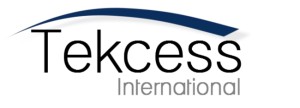Which is better for an automobile design, a 2-liter or 5-liter engine? The correct answer is that it depends. A smaller engine will have a fundamental fuel-efficiency advantage over larger engines. On the other hand, a larger engine will have an acceleration advantage over engines with a smaller displacement. Your answer depends on how you intend to compete.
Capital equipment engineers face similar architecture choices. They must select system architectures with fundamentally higher performance capacity on the attributes you seek to create a competitive advantage. Simply put, you want to choose architectures that make it easier for you to compete. You do not want to be saddled with a 5-liter engine architecture in a race for the best fuel efficiency against a competitor sporting a 2-liter engine.
As a product manager, your job is to make sure that design decisions create a fundamental architecture advantage. To ensure architectural advantage, follow these steps:
- Share the product performance attributes that drive the customer’s buying decision on which you intend to compete with engineering.
- Ask engineering to determine which elements of your equipment’s architecture define its performance on those attributes.
- For those elements in (2), ask engineering to score all architecture options including those selected by your competitors based on the option’s fundamental
- Buying-decision driver performance,
- Effects on other system performance attributes,
- Cost,
- Technical risk to implement, and
- Time to implement.
- Ask engineering to present the architecture option they believe will lead to competitive advantage and the plan to implement it.
While this should be an ongoing conversation between product management and engineering, the Product Lifecycle (PLC) process affords two formal opportunities. The first is in the product strategy development process, where engineering develops its architecture roadmap in response to the product requirements roadmap. The second is during new product development when engineering produces a Product Development Plan (PDP) in response to a Market Requirements Document (MRD).

